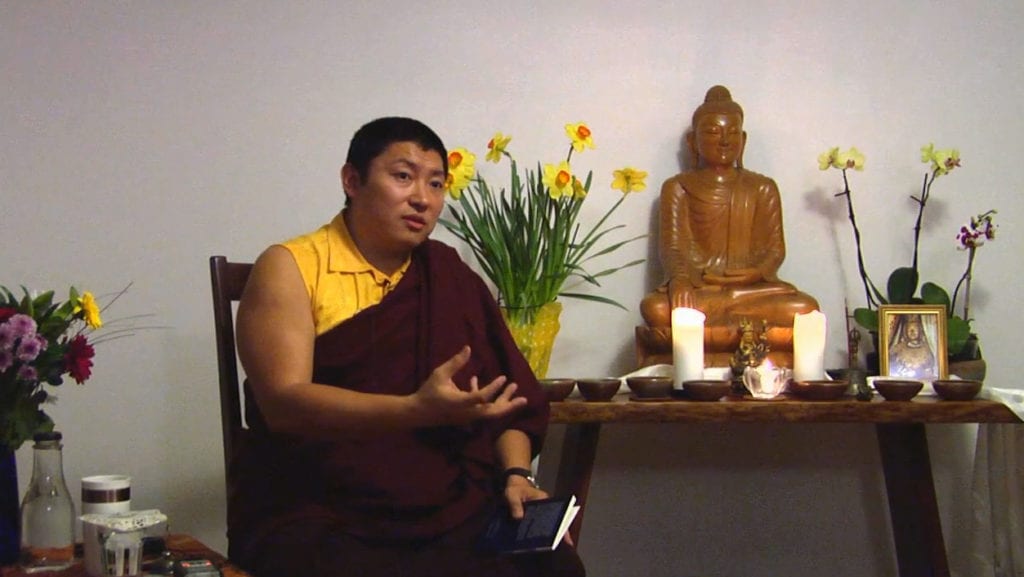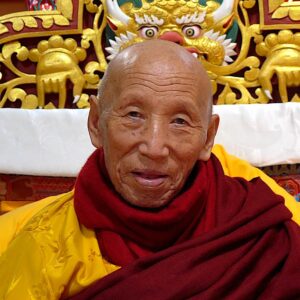Returning to the root of dharma practice brings benefit to practitioners at any level. Returning to the root means repeatedly studying the core teachings. In this video clip, Phakchok Rinpoche passes on a metaphor from his own teacher. In the metaphor, Dharma is compared to a fruit tree.
Dharma as Fruit Tree
Rinpoche explains that a fruit tree consists of various parts. A fruit tree includes the root, trunk, branches, leaves, and flowers, and fruits. The root of the Buddhadharma is the Buddha’s teachings. This refers to the sutras and tantras.
The trunk of the Buddhadharma tree is the teachings and writings of Indian scholars. The branches differ according to the individual countries where the Dharma has spread. For example, in Tibet, the branches would correspond to the 4 or 8 schools of Tibetan Buddhism. The leaves of the tree can spring forth from the root, the trunk, and the branches. The leaves symbolize gaining some understanding. Then, having gained some experience, flowers can appear. And finally, gaining realization is the fruit.
But a tree requires a heavy a steady, stable foundation because otherwise there will be no fruit. Similarly, when we want to understand Dharma, it is beneficial to go back from time to time to the root. Thus, throughout our path, we take the time to study the words of the Buddha and return to core texts for guidance and inspiration. The sutras and the tantras offer us a secure foundation. We can discuss with our lama and our teachers which texts might be of most benefit for us.
Additional Study
Phakchok Rinpoche frequently teaches on The Noble Wisdom of the Time of Death sutra. This short but profound Mahayana sutra encompasses the entire path to Buddhahood. Samye Institute offers a short course that guides you through this text here.










Responses